The Nextreme™ Performance Chiller Series from Laird Thermal Systems Offers Reliable Temperature Control for Laboratory Equipment
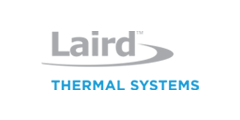
Introduction
Researchers have access to more sophisticated equipment than ever before. As labs work to become more automated to increase work flow, single-use systems are becoming more antiquated. Modern laboratory equipment offers more capabilities in smaller housings for researcher, as a single machine is now able to complete many different tasks. This is not only to cut down the cost of purchasing multiple pieces of equipment, but also to save precious lab bench space. One enabling factor of lab equipment miniaturization is the reduction in size of essential Cooling systems. Advanced compressor-based recirculating liquid chillers are smaller and portable so that they can be used to cool multiple types of laboratory equipment. Today’s chillers are vastly different than their predecessors, offering precise temperature control for laboratory and analytical equipment while delivering improvements in cost, size, noise and environmental impact savings.
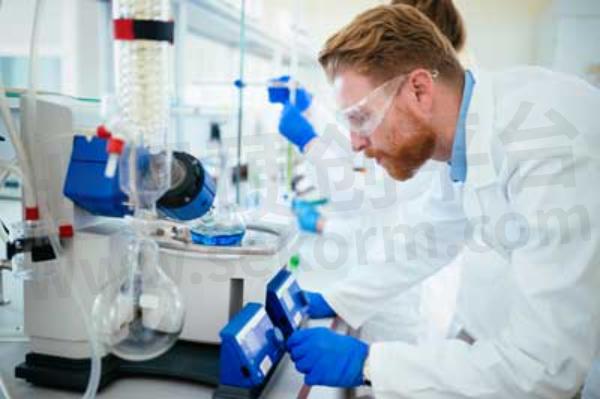
Modern laboratory equipment requires environmentally friendly Cooling Solutions that save cost, size and noise
Laboratory Requirements
Many types of laboratory equipment require precise cooling for thermally sensitive electronics. In addition to electronics cooling, lab equipment testing chambers can also require temperature control. Chemical reactions release or absorb heat, and precise temperature control is required to keep the reaction stable.
Lab applications requiring temperature control:
Chemistry
Reactor systems, autoclaves, synthesis, condensation of gases
Biology
Bioreactors, breeding, fermenters, reaction columns, incubation, cell cultivation
Oil & Gas
Consistent viscosity of liquids, solidifying point, fuel development
Industrial Research
Materials testing, environmental simulation, sample temp control, vacuum chambers, quality control
Food Science
Food development, temperature simulations, quality checks
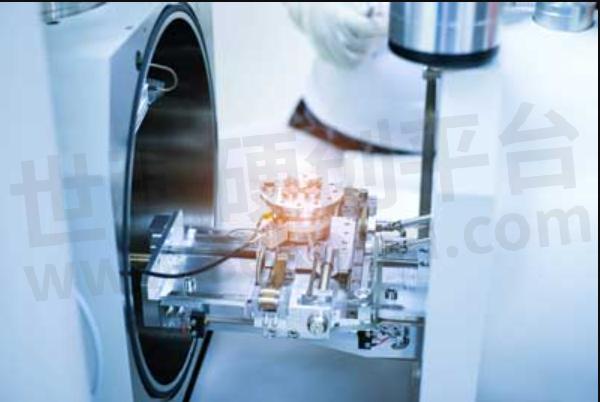
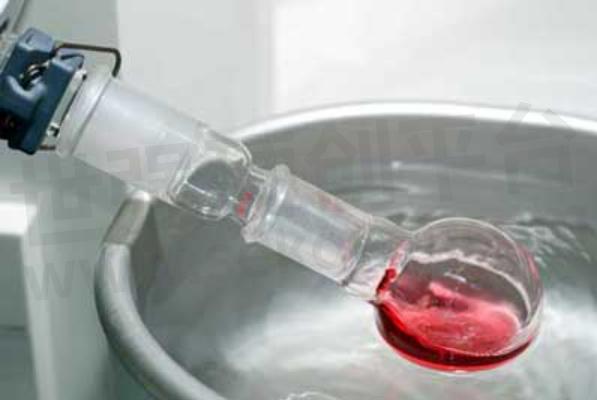
The trend of laboratory equipment miniaturization typically increases the heat flux density and heightens thermal challenges. When heat generating electronics are packaged into smaller housings, there is less physical room for natural airflow and heat dispersion. Waste heat must be dissipated efficiently to ensure proper performance of laboratory equipment.
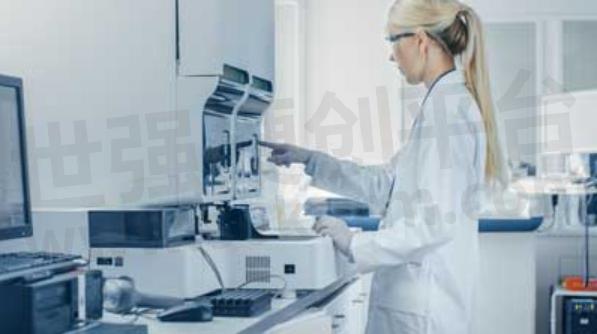
Laboratory equipment continue to decrease in size to free up precious lab space
Environmental regulations affect many markets and applications, and scientific research is no exception. It is estimated that research laboratories can use up to five times the amount of energy per square foot compared to prototypical office space. Laboratories that qualify for Leadership in Energy and Environmental Design (LEED) certifications must prove efforts to go green. In addition, labs in most countries are now required by law to use cooling equipment with refrigerants that are environmentally safe. Another restriction in Europe is ROHS (Reduction of Hazardous Substance), which means that lab equipment cannot contain led, mercury, cadmium and other heavy metals. Cooling systems must also meet UL61010-1 or IC 61010-1 lab safety standards. These standards include specifications for electromagnetic compatibility and electromagnetic emissions to ensure all laboratory equipment can operate in the same room without interference. When designing laboratory equipment, OEMs will either ask for a certification from the chiller manufacturer, or certify it themselves as part of the installed system.
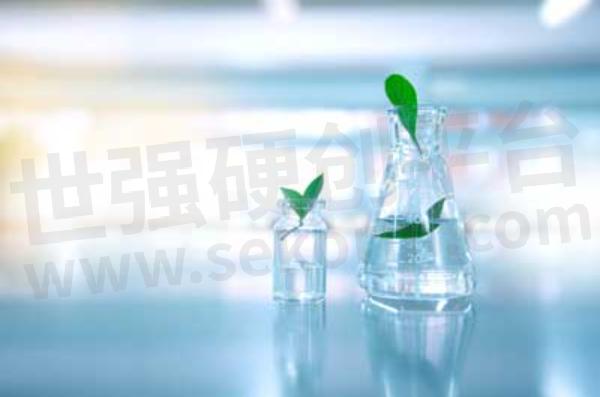
Cooling solutions must use refrigerants that are environmentally safe
Cooling Solution Comparisons
OEMs, laboratories and research universities require a compact, energy-efficient chiller that is easily portable and versatile enough to support the cooling needs of their entire equipment installation. Chillers should also utilize natural, environmentally-friendly refrigerants to meet government regulations.
Modern chiller systems offer a high coefficient of performance (COP), often achieving a 3-to-1 ratio of cooling capability versus power consumption. This means if the laboratory equipment has a heat load of 3 Kw, it only requires 1 Kw of energy to properly cool the equipment. Chiller systems tend to be smaller than alternative technologies operating near ambient conditions, like liquid-air-heat exchangers, because they benefit from the latent energy of the refrigerant selected to provide cooling through evaporation. If the laboratory equipment is operating in ambient temperature, liquid-heat-exchangers are more efficient. However, liquid-to-air heat exchangers do not cool below ambient like compressor-based systems.
Laird Thermal Systems Solution
The Nextreme™ Performance Chiller Series from Laird Thermal Systems offers reliable temperature control for laboratory equipment.
Available in a footprint as small as 20.5 x 17.7 x 26.4, the Nextreme Chiller precisely heats and cools fluid to maintain the thermal set point with an accuracy of ±0.1°C. Utilizing high-performance variable speed motors, it offers lower noise operation and reduced energy consumption by up to 50% compared to conventional compressor-based systems.
By using environmentally friendly R513A refrigerant, the Nextreme Chiller achieves similar performance with half the Global Warming Potential (GWP) compared to traditional hydrofluorocarbon (HFC) refrigerants. The chillers not only meet CE and RoHS requirements, but also UL61010-1 and IEC 61010-1 lab safety standards.
Compared to competing chillers and compressor-based cooling systems, the Nextreme Performance Chiller Series features:
Smaller footprint
Lower Noise
Lower set point of temperature
Precise cooling below ambient
Simple user interface
Natural, environmentally-friendly refrigerants
Customizable options for application specific needs
Featuring an easy-to-use LCD touchscreen display, the Nextreme Performance Chiller Series is designed with the laboratory technician in mind. It allows the technician to control temperature setpoints, coolant type, flow and alarm settings while coolant level is easily monitored through the indicator window located on the front panel. For maximum uptime, the Nextreme Chiller can be equipped with the optional “hot swappable” 5-micron water filter for filtering particulates from the coolant circuit, which means that the system can operate also during maintenance.
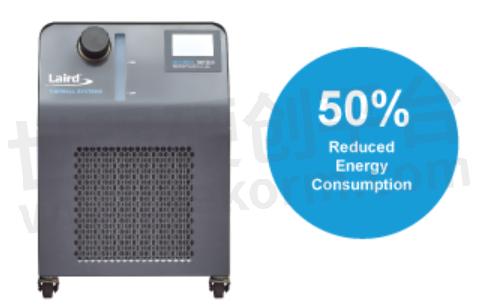
The environmentally friendly Nextreme™ Performance Chiller features a user-friendly design in a compact form factor
The Nextreme Chiller features an optical fluid level sensor with no moving parts, which increases reliability and uptime when compared to chillers equipped with mechanical fluid switches. If the fluid level drops below recommended operating conditions, the user will be alerted by the programmable alarm. The chiller will also alert users when low- or high-pressure and temperature limits have been exceeded in order to protect the equipment. In addition, the Nextreme Chiller utilizes a low pulse turbine pump to ensure low vibration operation to maintain stable operation within the laboratory environment.
The Nextreme Performance Chiller Series is available in three standard cooling capacities including 1600 W, 2400 W and 4900 W models. If laboratory equipment requires a custom solution, Nextreme Chiller models are highly configurable in order to meet application requirements.
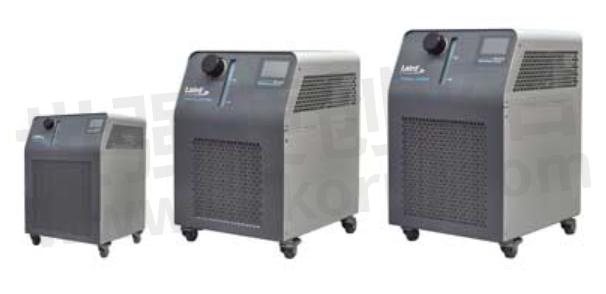
The Nextreme™ Recirculating Chiller Platform is available in three different versions, 1600W, 2400 W and 4900 W
The Nextreme Chiller can operate on 208-240VAC, 60Hz and 200-230VAC, 50Hz. While many other manufactures have a different model for Europe and North America, the single Nextreme Chiller can be purchased and operated globally. This is important for when a company chooses to test equipment in one country before shipping to a different region. It also means that companies can carry less inventory as a single chiller can ship anywhere.
Conclusion
Many laboratory instruments require precise thermal management systems to ensure proper performance and reliable results. Today’s chiller systems are more compact, portable and efficient. This enables one cooling unit to easily cool multiple types of lab equipment. This versatility allows lab managers to reduce upfront equipment costs and long-term maintenance costs, while increasing lab space.
- +1 Like
- Add to Favorites
Recommend
- The Nextreme Value Chiller Series from Laird Thermal Systems Offers Reliable, Cost-efficient Temperature Control for Electron Microscopes
- Laird Thermal Systems Expands Nextreme™ Performance Chiller Platform with New Thermoelectric-based Unit
- Laird Thermal Systems‘ Nextreme™ Value Chillers Provide Economical, High Reliability OEM Cooling Solution
- Nextreme™ Value Chiller Family Provides Economical Cooling Solution for Manufacturers of Medical, Industrial and Analytical Equipment
- Nextreme Series Supports Cooling Needs of PET Scanning Systems
- Laird Thermal Systems to Showcase Next Generation Active Cooling Technologies at CIOE 2024 - China International Optoelectronic Exhibition
- Laird Thermal Systems Offers Eco-Friendly Temperature Stabilization Solutions for OEMs’ Climate Action Goals
- Laird Thermal Systems NRC400 Thermoelectric Chillers for Low-Power Lasers
This document is provided by Sekorm Platform for VIP exclusive service. The copyright is owned by Sekorm. Without authorization, any medias, websites or individual are not allowed to reprint. When authorizing the reprint, the link of www.sekorm.com must be indicated.






























































































































































































































































































































































































































































































































































































































































































































































































































































































